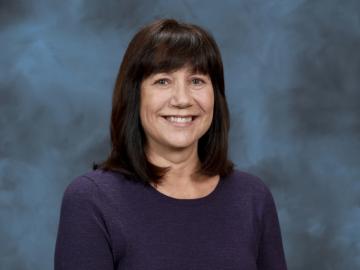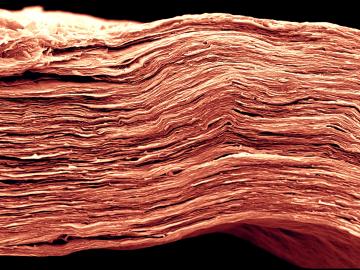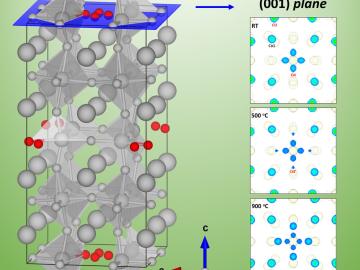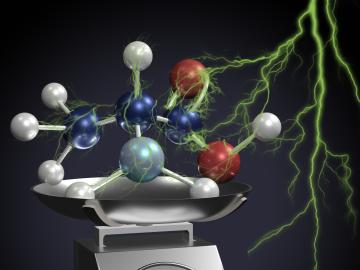
Filter News
Area of Research
- Advanced Manufacturing (2)
- Biology and Environment (10)
- Computational Engineering (1)
- Computer Science (6)
- Electricity and Smart Grid (1)
- Energy Science (66)
- Energy Sciences (1)
- Functional Materials for Energy (2)
- Fusion and Fission (8)
- Fusion Energy (7)
- Isotope Development and Production (1)
- Isotopes (12)
- Materials (73)
- Materials for Computing (11)
- National Security (6)
- Neutron Science (17)
- Nuclear Science and Technology (14)
- Nuclear Systems Modeling, Simulation and Validation (1)
- Quantum information Science (1)
- Supercomputing (24)
News Type
News Topics
- (-) Advanced Reactors (27)
- (-) Big Data (34)
- (-) Energy Storage (80)
- (-) Isotopes (29)
- (-) Microscopy (31)
- (-) Physics (31)
- (-) Polymers (24)
- (-) Space Exploration (13)
- 3-D Printing/Advanced Manufacturing (93)
- Artificial Intelligence (62)
- Bioenergy (46)
- Biology (51)
- Biomedical (32)
- Biotechnology (16)
- Buildings (43)
- Chemical Sciences (57)
- Clean Water (16)
- Composites (25)
- Computer Science (121)
- Coronavirus (28)
- Critical Materials (23)
- Cybersecurity (21)
- Education (3)
- Element Discovery (1)
- Emergency (2)
- Environment (99)
- Exascale Computing (24)
- Fossil Energy (2)
- Frontier (25)
- Fusion (28)
- Grid (43)
- High-Performance Computing (58)
- Hydropower (6)
- Irradiation (3)
- ITER (6)
- Machine Learning (31)
- Materials (107)
- Materials Science (94)
- Mathematics (3)
- Mercury (5)
- Microelectronics (1)
- Molten Salt (8)
- Nanotechnology (44)
- National Security (26)
- Neutron Science (88)
- Nuclear Energy (55)
- Partnerships (36)
- Quantum Computing (21)
- Quantum Science (47)
- Security (13)
- Simulation (24)
- Software (1)
- Statistics (2)
- Summit (32)
- Transportation (73)
Media Contacts

A study led by Oak Ridge National Laboratory explored the interface between the Department of Veterans Affairs’ healthcare data system and the data itself to detect the likelihood of errors and designed an auto-surveillance tool

Scientists have discovered a way to alter heat transport in thermoelectric materials, a finding that may ultimately improve energy efficiency as the materials

An ORNL-led team's observation of certain crystalline ice phases challenges accepted theories about super-cooled water and non-crystalline ice. Their findings, reported in the journal Nature, will also lead to better understanding of ice and its various phases found on other planets, moons and elsewhere in space.

In a step toward advancing small modular nuclear reactor designs, scientists at Oak Ridge National Laboratory have run reactor simulations on ORNL supercomputer Summit with greater-than-expected computational efficiency.

OAK RIDGE, Tenn., March 22, 2019 – Karren Leslie More, a researcher at the Department of Energy’s Oak Ridge National Laboratory, has been elected fellow of the Microscopy Society of America (MSA) professional organization.

OAK RIDGE, Tenn., March 11, 2019—An international collaboration including scientists at the Department of Energy’s Oak Ridge National Laboratory solved a 50-year-old puzzle that explains why beta decays of atomic nuclei


Gleaning valuable data from social platforms such as Twitter—particularly to map out critical location information during emergencies— has become more effective and efficient thanks to Oak Ridge National Laboratory.

A University of South Carolina research team is investigating the oxygen reduction performance of energy conversion materials called perovskites by using neutron diffraction at Oak Ridge National Laboratory’s Spallation Neutron Source.

OAK RIDGE, Tenn., Jan. 31, 2019—A new electron microscopy technique that detects the subtle changes in the weight of proteins at the nanoscale—while keeping the sample intact—could open a new pathway for deeper, more comprehensive studies of the basic building blocks of life.


